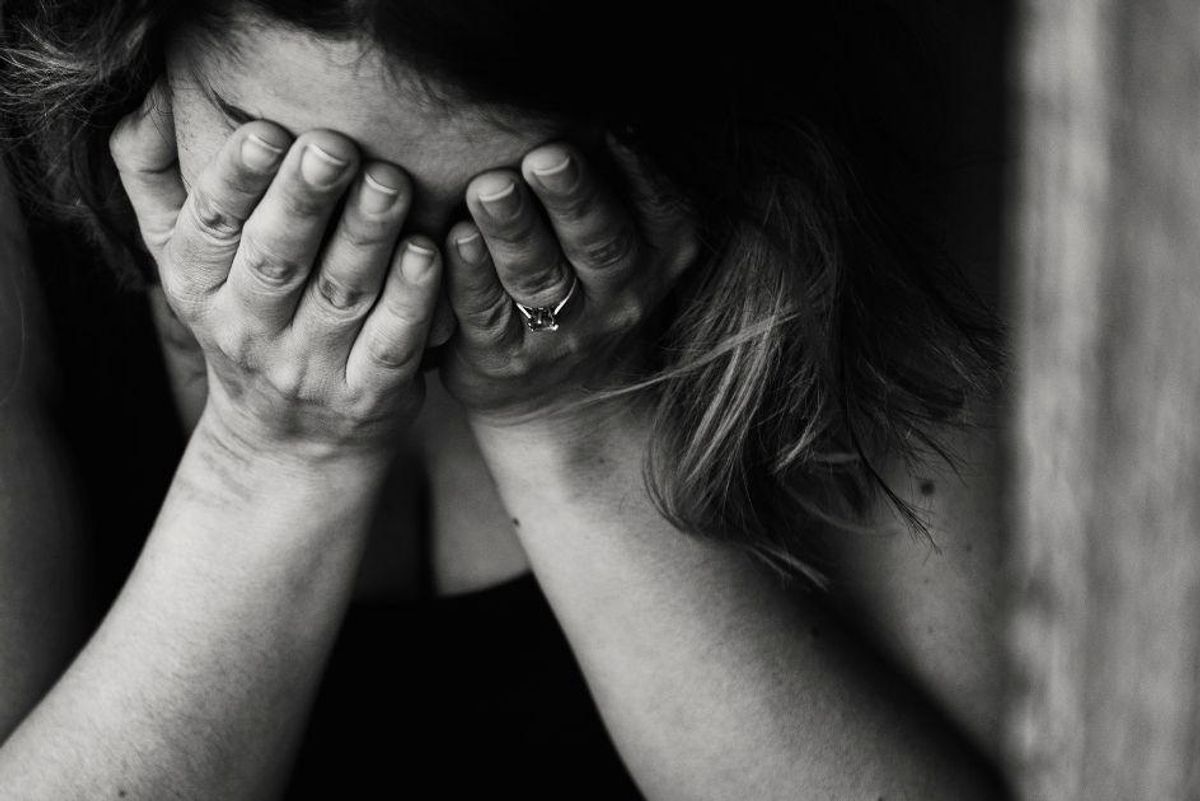Zoom memorials highlight the ironic cruelty of trying to mourn together during the pandemic

Earlier this month, I attended my first Zoom wedding. A week after that, I attended a Zoom baby shower.
Tomorrow, I'll attend a Zoom gathering to mourn the loss of a family friend. His name was Peter. He died of COVID-19 last week.
This gathering isn't technically a funeral or memorial service, but rather a virtual devotional taking place on Zoom at the same time as Peter's physical burial. A few close friends and family will gather at the gravesite—masked and distanced—while the rest of us share readings and prayers over Zoom to honor his interment.
It's weird. There's no other way to say it. With the wedding and baby shower, we all sort of laughed our way through the weirdness. We acknowledged the bummer of not being able to get together, but at this point we're all accustomed to having to meet virtually. Zoom celebrations are better than no celebrations at all.
But mourning this way feels...different. We can't laugh away the awkwardness of it when the Zoom meeting itself is a reminder of the tragic cause of our friend's death.
Celebratory gatherings are fun, but not necessary. Gathering when someone dies feels necessary in a way, and the inability to do that adds an extra layer of loss to the grief we're already experiencing. Normally, our whole community would gather together to honor Peter's life tomorrow. We'd put on appropriate funeral attire, stand side by side at his grave, hold hands or hug one another as we mark the momentousness of his passing. We'd all bring food and break bread together as we share stories of his life. We'd pass around tissues, crying and laughing and sharing in the oh-so-human experience of bringing together the lives he had touched.
But we can't do any of that. If we did, we'd run the risk of having to do it all over again for another friend or loved one taken too soon by this stupid virus. So we do what we can do and deal with the strange questions—What does one wear to a Zoom mourning? How long it will be before we can actually gather for a real memorial service? Will it feel like it's too late then? Will we want to do that in the midst of celebrating a return to non-distanced life?
This pandemic has taken so much, and each thing stings in its own way. The death toll itself is overwhelming, especially here in the U.S. where we have already lost more than 330,000 lives. A hundred 9/11s and counting. Five Vietnams in less than a year. It's unreal. In the beginning, we were told that all of us would likely end up knowing someone who died of COVID-19, and some people have now lost multiple family members. More will follow as we head into the deadliest month of the pandemic. That's not doom and gloom forecasting—that's the reality of the current moment.
But the loss of in-person mourning as millions are losing loved ones before they expected to is a tragedy in and of itself. There's a cruel irony in it, that we can't gather in person to mourn if we want to stop the thing that's making it so we can't gather in person to mourn. When we need the comfort of coming together the most, we can't, as indulging in that comfort could lead to even more suffering. Of all of the sacrifices we've had to make, the loss of communal mourning is one of the hardest.
And so we open our computers and enter our virtual meeting rooms and try to comfort one another through our grief amid the inevitable unmute reminders. It's weird. It all feels wrong. But it's necessary. We need to mourn our losses together. We also need to be able to mourn the fact that we're not able to do that the way we want to.
There is gratitude to be found in all of this, of course. It's pretty incredible that we live in a time when we have the technology to at least see one another's faces and hear people's voices as we share our losses at a distance. If this pandemic had hit in my childhood, we'd have had no community ability to mourn at all. A Zoom gathering to mourn is better than no gathering at all—but it's still all of the weird, wrong, sad things at once.
And what's extra painful about it is that it didn't have to be this way. Next time we have a pandemic, let's all agree to just follow New Zealand's lead, shall we? Hundreds of thousands of Zoom funerals really ought to be enough to get us all on the same page.
- 8 simple words to say when someone you love is grieving. - Upworthy ›
- Psychologist's 'Ring Theory' can help you not say the wrong thing to ... ›
- 102 days after his wife's death, Patton Oswalt describes grief as only ... ›
- American claims that Italy is not a First-World country - Upworthy ›

